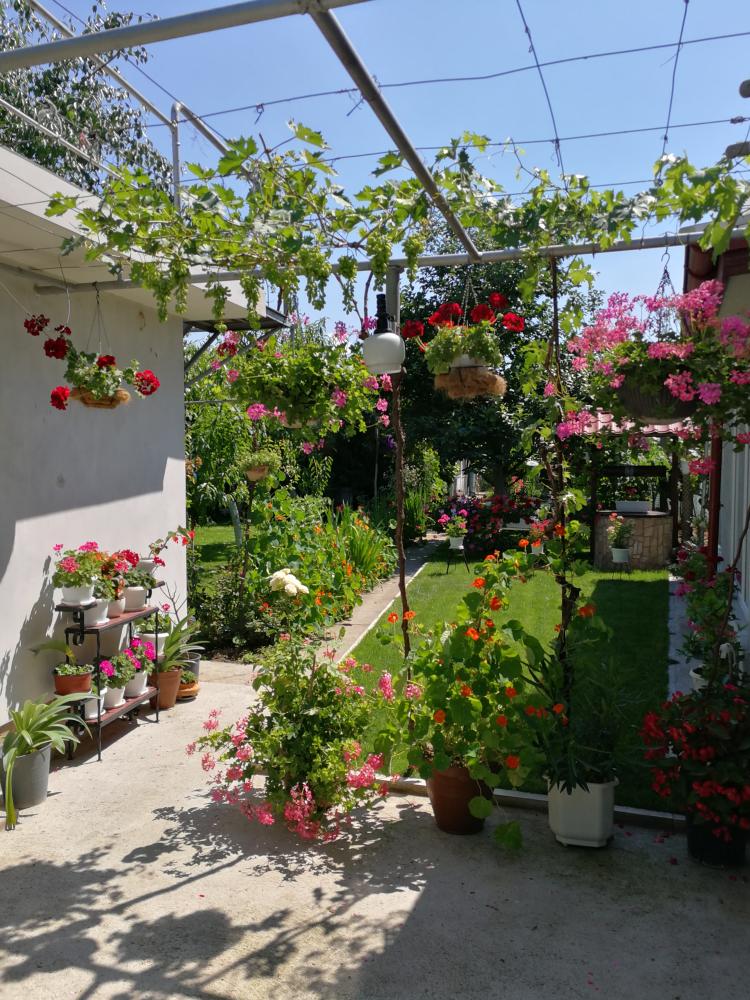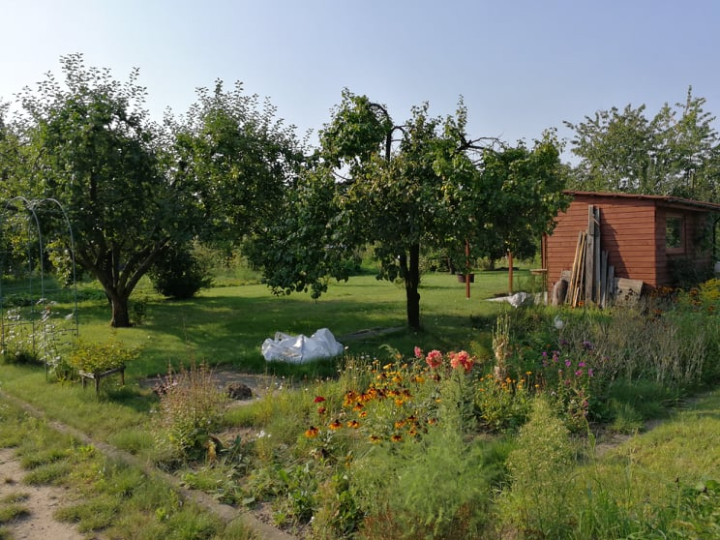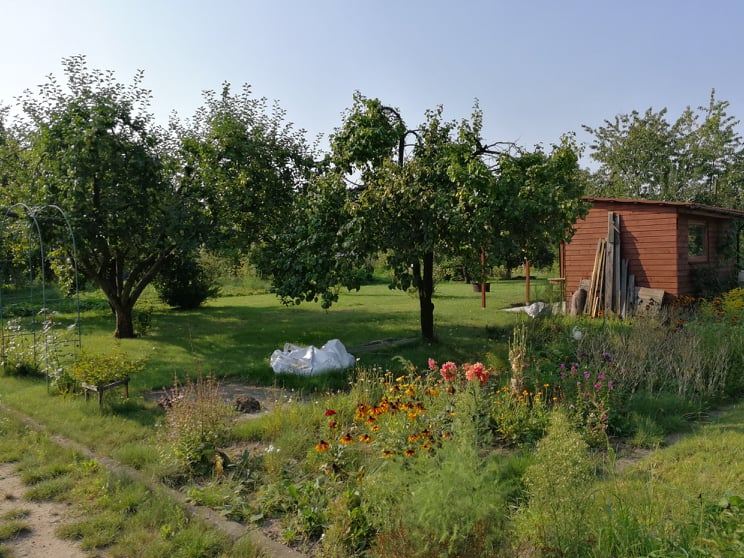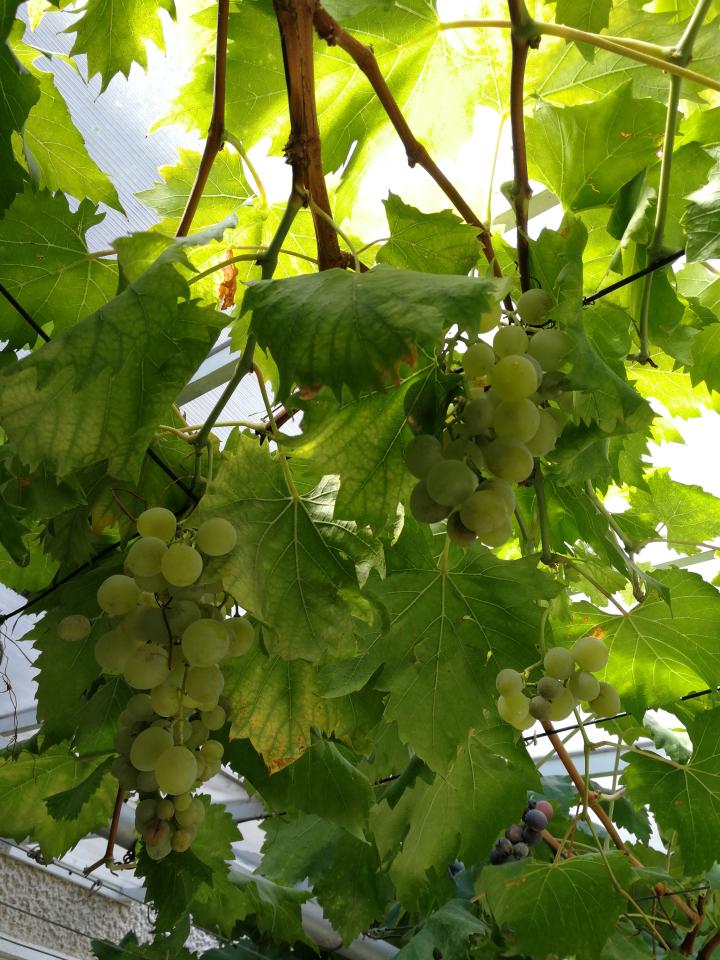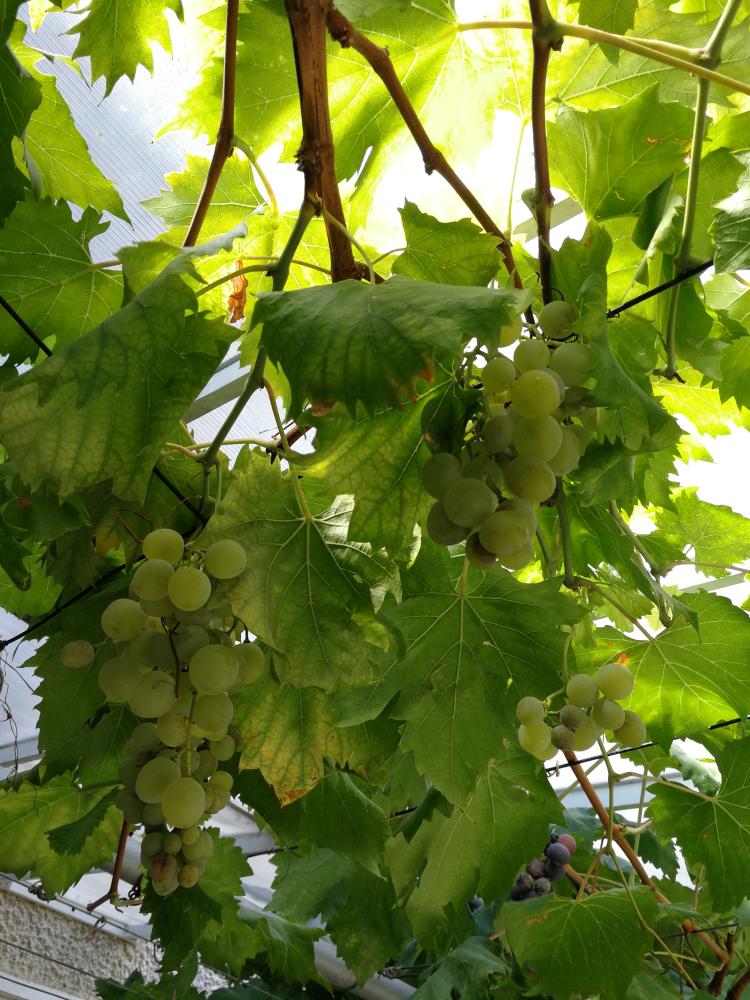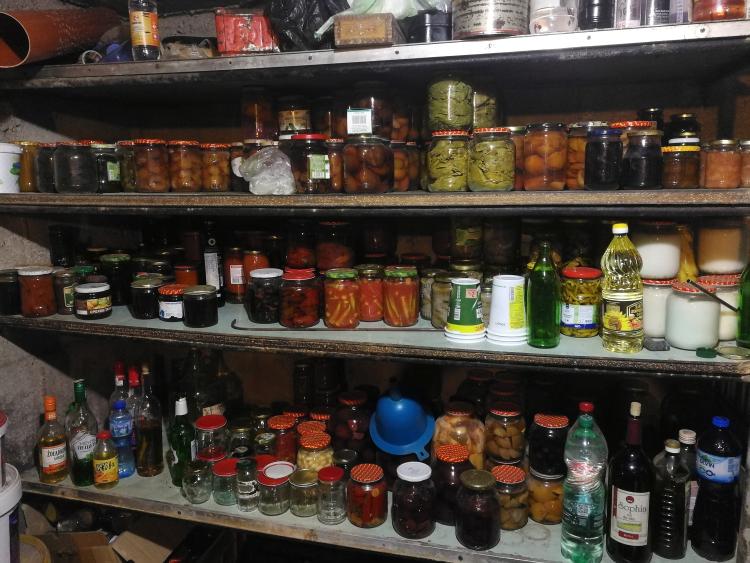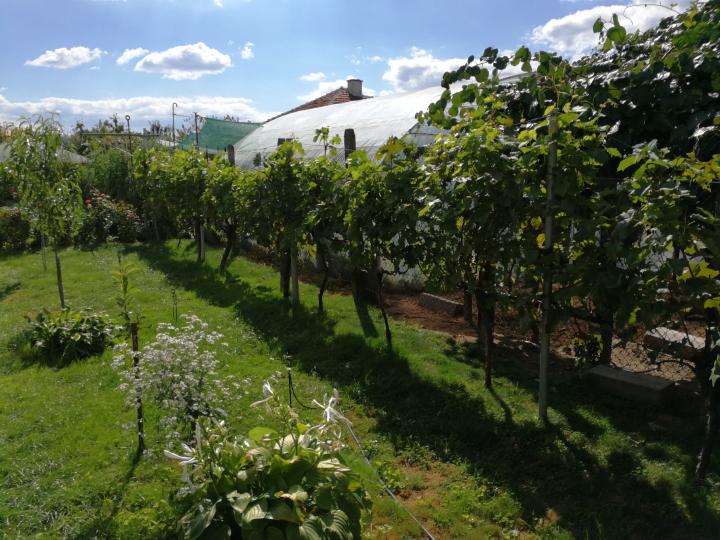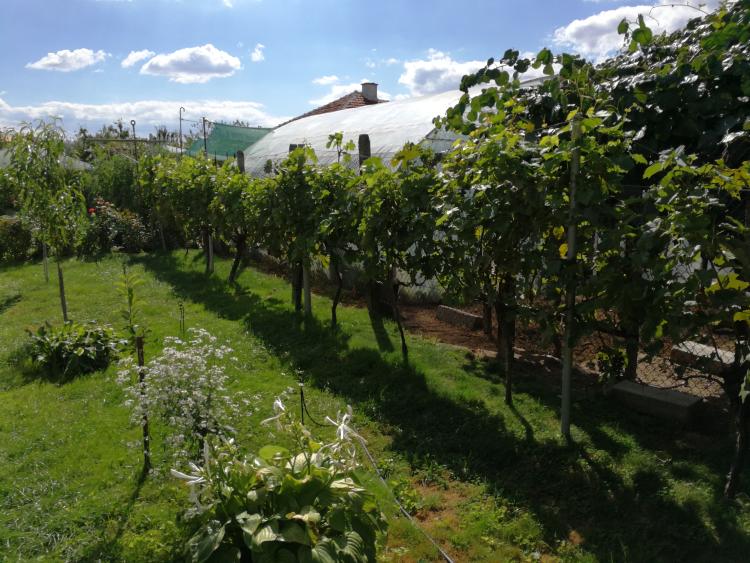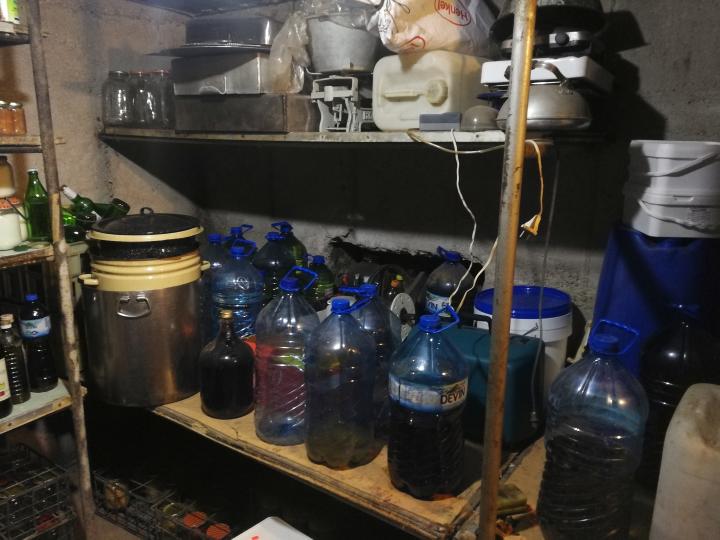Producing food at home, preserving and pickling it in jars, played important and diverse roles in Southeastern Europe and Bulgaria in the 20th century. Since the 1990s, this practice has undergone a number of changes and now fulfils a variety of functions – from everyday food security and small gifts for friends or family to a key role in the church year, feast days, and the Bulgarian culinary culture. Sometimes home preserving simply expresses the desire for continuity of flavours.
Home preserving as a culture and practice in Southeastern Europe
Text
Although glass is an old material (usually a composition of sand, lime and optionally soda or potash) and has good properties (it does not change shape, its contents keep their flavour, it is easy to clean and reusable), glass jars were not traditionally used to store food until the 18th century.1 In the 19th century, new types of closure,
sterilization
sterilization
A physical or chemical process in which microorganisms are removed from perishable items. In the medical context, sterilization refers to an operation to prevent fertility.
and heating processes made this preservation technique an important method of ensuring food security for the population and supplies for military and scientific expeditions. 2 But neither preserving food, nor the agricultural use of small gardens or allotments for subsistence, is a phenomenon limited to South Eastern Europe and Bulgaria. In German-speaking countries, too, people have their Schrebergarten, Lauben- und Kleingartenkolonien; in Poland the działka and from Ukraine to Russia, the dacha. Cultivating fruit and vegetables on a bit of green space right next to one’s house, in a front or back garden, is not uncommon in Europe.
Text
What distinguishes Bulgaria and Southeastern Europe from other (Eastern) European countries is the major role that jars play: their sheer quantity and presence in everyday life, the choice of preserved foods, the social and symbolic significance of the jars, and the number of products that accompany or are directly related to the preserving culture (such as wine, rakiya, sausage, yoghurt, cheese or honey). Whereas in Central Europe fruit is the main food preserved (e.g., as jams, compotes, juice or syrup) and in Eastern Europe, mainly some vegetables (e.g., salted or vinegar-based pickles), in Southeastern Europeans and Bulgarians preserve everything: starting with tomatoes and peppers, through vine leaves and meat, to pure fat. Everything that the garden, private bartering, and the wider circle of family and friends can provide, that is affordable on the market or that is needed for religious festivities, can end up in a jar.
Text
If preserving food is understandable in high summer, in times of crisis, or in a perceived or actual economy of scarcity, this can only partially explain the persistent practice and range of preserving in post-Soviet Bulgaria. In view of the full supermarket shelves and the fact that home preserving and pickling can even be more expensive, other explanations are needed. So how did the production and use of preserves come to be so important in Bulgaria in the 20th and 21st centuries? To answer this question, it is necessary to delve a little deeper into the background and history of this practice. In Bulgaria, too, preserving in jars is steeped in tradition, but initially it was limited to just a few types of fruit and vegetables. Likewise, in socialist Bulgaria preserving in jars fulfilled important social functions. Besides these, it is important to understand how this practice is anchored in the Bulgarian gardening and domestic year, i.e., what time-consuming steps are necessary all year round. There are of course religious, family, and financial reasons for this labour-intensive process. Yet the shared, communal experience of producing one’s own food increases appreciation for homemade preserves and pickles in Southeastern Europe and Bulgaria – even in the post-Soviet era.
From monocultures in the field to diversity in jars
Text
Bulgaria only regained independence from the Ottoman Empire in 1878 and full sovereignty in 1908. The great social, agricultural, and industrial transformations did not take hold of the country until the 20th century. Until the 1950s, Bulgarian society was based on small-scale farming, with relatively small plots of land under cultivation, but with a large labour force. Agriculture itself was still dominated by monocultures such as wheat, sunflowers, or tobacco. Although vegetables such as peppers, which were later considered a local speciality, were not cultivated in Bulgaria before the 19th century, by 1900 Bulgarian gardeners in the Habsburg monarchy and in Central Europe were sought-after experts.3 While knowledge of fruit cultivation and horticulture was thus available at an early stage, in Bulgaria itself these only took off in the 1920s in the context of an economic crisis.
An interesting source for this transitional period is economist Vladimir Miteff, whose 1947 doctoral thesis at the University of World Trade (now the University of Economics and Business) in Vienna was on vegetable and fruit production and utilization, and its significance for the Bulgarian national economy. Miteff noticed that people were eating more fruit and vegetables, but less meat and fat; he saw potential in this for the Bulgarian economy, especially for the export of these agricultural products. Miteff recognized that Bulgaria had favourable soil and climatic conditions for cultivating fruit and vegetables. But to increase yields and exports required improvements in agriculture, state subsidies, and industrial developments in food preservation.
For Miteff, the most important vegetables for industrial processing were stringless green beans, tomatoes (as juice, paste, concentrate, purée, paste, passata made from peeled tomatoes, whole tomatoes, and bamya, also known as okra, with whole tomatoes and tomato juice poured over it) and peppers, the latter also used as a substitute for exotic spices, “red pepper” (paprika) or for vegetable
paprikash
paprikash
Paprikash (hungarian paprikás) originated in Hungarian national cuisine and is a stew or ragout consisting mainly of paprika, tomatoes, possibly potatoes and onions, which can be supplemented as desired with diced white meat or fish. In German-speaking countries, paprikash is often refined with cream or sour cream.
, made from bell peppers. In Miteff’s view, the most important industrial fruit products were fruit
pulps
pulps
The outcome of a processing technique that leaves a pulpy mass (of fruit pulp, fruit pieces and juice), often with a fibrous consistency. Pulp is an intermediate step in the production of jams or the extraction of starch from potatoes. Besides its use in processing fruit and vegetables, pulp is also the basis for products in the paper industry.
and compotes made from sweet and sour cherries, apricots, peaches, quinces, strawberries and raspberries. Strawberries and grapes were still cultivated on a very small scale in the early 1930s, and plums also played only a minor role as prunes or as brandy.

The greenhouse of the author’s father-in-law. The love and care for tomatoes and cucumbers is almost boundless. Trud village near Plovdiv (Bulgaria). Archiv des Autors, 2021, CC BY 4.0
The greenhouse of the author’s father-in-law. The love and care for tomatoes and cucumbers is almost boundless. Trud village near Plovdiv (Bulgaria). Archiv des Autors, 2021, CC BY 4.0

The garden is planted almost all year round and requires work and care throughout. Trud village near Plovdiv (Bulgaria). Archiv des Autors, 2021, CC BY 4.0
The garden is planted almost all year round and requires work and care throughout. Trud village near Plovdiv (Bulgaria). Archiv des Autors, 2021, CC BY 4.0
Text
According to Miteff, the expansion of the Bulgarian preserving industry is what made it possible to supply the general population with nutrients and vitamins even in winter and spring. Further investments could meet the demand for longer-lasting and partly ready-to-use food. One prerequisite for processing and exporting more fruit and vegetables was to focus more on preservation and to reduce spoilage of the harvest through contact with light, air, and heat to a minimum.4 Another advantage was that the taste and price of the food would remain the same. Preserves and pickles, Miteff said, should be seen as cheap, good, and nutritious food that were important for export. In contrast, he felt that the domestic Bulgarian market was not receptive enough:
Another reason for the lack of domestic demand for the products of industrial canneries is the fact that the majority of Bulgarian households preserve food themselves. The fruit is boiled down in larger quantities, e.g., tomato purée or various fruit jams, sterilized in tins or jars, and the families thus last the year with these homemade preserves.5
Text
According to Miteff, food preservation for home consumption was widespread and firmly established in Bulgaria in the first half of the 20th century, but limited to a few selected fruit and vegetables – mainly cucumbers, peppers or cauliflower, apples, pears and plums. Moreover, home preserving was more of an economic necessity to reduce poverty and hunger than a social or cultural phenomenon, let alone being part of a regional or national cuisine.According to Miteff, food preservation for home consumption was widespread and firmly established in Bulgaria in the first half of the 20th century, but limited to a few selected fruit and vegetables – mainly cucumbers, peppers or cauliflower, apples, pears and plums. Moreover, home preserving was more of an economic necessity to reduce poverty and hunger than a social or cultural phenomenon, let alone being part of a regional or national cuisine.
The jar economy and travelling peaches
Text
Under the leadership of the Bulgarian Communist Party (from 1946), agriculture was mechanized and modernized on the Soviet model. The state took over the production, control, purchase, and distribution of agricultural food, regulating fruit and vegetable cultivation with licences. Smaller farms were grouped into larger units, or
cooperatives
cooperatives
A union or association of persons working together on economic production. A cooperative makes sense above all when goals cannot be achieved alone, but a certain degree of independence is to be maintained. Under socialism, however, cooperatives served to dissolve private assets and achieve targets in the state planned economy.
. Seeds and seedling production in nurseries, plant research in horticultural institutes, and training the population were also organized by the state; even the pricing was regulated. In short, the Bulgarian socialist state had a massive vested interest and an active role in (promoting) the cultivation of fruit and vegetables. Increasing agricultural activity and cultivation of fruit and vegetables on small, often privately managed plots for self-sufficiency or for resale on the black market are the very antithesis of the socialist
planned economy
planned economy
In a planned or centralized economy, decisions are made and targets are set by a centrally administered body. These central macroeconomic plans are enforced and controlled in an authoritarian political system. In contrast to the free market economy, there is no reciprocity according to the principle of supply and demand.
. However, from the 1960s onwards, the Communist Party began to tolerate this – actually subversive – practice, and even to control the allocation of and thus access to garden space in cities.
Besides the low availability and inferior quality of commercially available products, other key reasons for increased preserving and pickling in jars included family structures, mobility, and the spatial distribution of families and households. In socialist Bulgaria, food preserved in jars became a material, symbolic, and social resource. While younger generations moved from the countryside to towns in the hope of a better life, the older ones mostly stayed in the villages where they produced and preserved fruit and vegetables. Jars of home produce thus became sociocultural capital that strengthened family ties and friendships; at the same time they lowered the cost of living and made it possible to live in town at all. Julijan Konstantinov (2001) speaks in this context of the “distributed” or “travelling” household. Although spatially separated between town and country, the family was conceived as one shared, dispersed household that was supplied with food produced and preserved at home.
Whenever relatives visited, empty jars were brought back to the village and full ones were taken to town. Or the food was sent in parcels. In addition, fruit and vegetables – raw or preserved – were considered welcome gifts and tokens of appreciation. This kind of exchange and private transfer of goods in jars from the countryside to town through a network of relatives and acquaintances could compensate for social differences and ensure important access to valuable resources. Antonij Gălăbov (2001) called it the “way of the peaches” and Eleanor Wenkart Smollett (1989) appropriately speaks of an “economy of jars.” Preserving in glass jars was fully geared towards the material support of family and friends.
Jars in religious festivals and Balkan cuisine
Text
With the political and economic transformation of the 1990s, the range of functions and individual motifs of Bulgarian preserving culture also expanded. Jars are still seen as a way to supplement low incomes or save money. And glass jars are still given and passed on to family and friends, but now the recipients have often moved not only to larger towns, but even abroad. Members of older generations who were shaped by socialism continue to preserve and pickle in jars, whether for financial reasons or out of habit. New enthusiasts do it as a lifestyle choice or hobby. Today, gardening and growing one’s own fruit and vegetables are also a leisure activity or means of self-expression. Preserving and pickling has become part of the do-it-yourself culture, and of consciously avoiding industrial products to critique and resist a globalized, capitalist system that is partly to blame for the poor quality of goods in Southeastern Europe.
Another reason why preserving in jars remains ubiquitous in Bulgaria is that the garden produce has become an integral, foundational part of Balkan cuisine and food culture. Thus food in jars, producing and consuming it, is part of culinary life every day, all year round; it is a family, collective, and social practice. Preparing and enjoying this food is often a collective event, with the whole family, friends and neighbours. And even if one is not actually producing food from one’s own garden, food in jars, how to make it, and the related costs are always an important topic of conversation.6
In Bulgaria, as elsewhere, gardening and preserving require preparation and work all year round.7 Not only the seasons shape this rhythm, but also the Orthodox church calendar and religious feast days. At the end of January, the seed is prepared for the coming season. On 14 February, the feast of Trifon Zarezan Trifon Zarezan Tryphon (“the one who was cut down”) lived in the 3rd century and is venerated in both the Catholic and Orthodox churches as a martyr and patron saint of gardeners and vintners. In many places in Bulgaria, a festival with games, dance and music, food and wine is celebrated on this day, reminiscent of fertility rites in honour of Dionysus, the Greek god of wine.[/iB], people prop up the vines and drink wine, preferably that they have made themselves. While (homemade) sausages and meat products are eaten earlier in the year, people give up these and other animal products at the beginning of Lent. Around Blagoveshtenie, the feast of the Annunciation on 25 March, before the fruit trees start to blossom, they are pruned. At Easter, parts of the feast are prepared with homegrown or home preserved ingredients. The actual vegetable sowing starts in April with beans. May brings more intense work, as almost every other vegetable – tomatoes, peppers, cucumbers, potatoes, lettuces, young onions, spinach – is planted, especially after St George’s day on 6 May. This is also the time to sow the spice plant chubritsa (summer savory, Satureja hortensis), a key ingredient in Bulgarian cuisine, as well as vines whose leaves can be stuffed with rice to make sarmichki later in the year.</p> <p>June marks the beginning of the preserving season. Beans and peas are cooked first, followed by pickling cucumbers in vinegar. Then strawberries, cherries and peaches are made into compote and jam. In July, other fruit (such as apricots) are added and people prepare [IB title=lutenitsa]To make this, purée tomatoes and peppers, then cook them in a large pot with onions, garlic, oil and salt. Add sugar, ground pepper and a little lemon, boil again to reduce for 10–20 minutes until the desired consistency is reached and pour into small jars. (a tomato–paprika ketchup). Processing both fruit and vegetables takes several days. Several hundred jars worth of food per household are boiled in huge cooking pots, some of which have been passed down through generations. As July turns into August, the harvested chubritsa leaves are dried and crushed and other spices are prepared. Other fruit such as berries and figs are also made into preserves.
In Bulgaria, as elsewhere, gardening and preserving require preparation and work all year round.7 Not only the seasons shape this rhythm, but also the Orthodox church calendar and religious feast days. At the end of January, the seed is prepared for the coming season. On 14 February, the feast of Trifon Zarezan Trifon Zarezan Tryphon (“the one who was cut down”) lived in the 3rd century and is venerated in both the Catholic and Orthodox churches as a martyr and patron saint of gardeners and vintners. In many places in Bulgaria, a festival with games, dance and music, food and wine is celebrated on this day, reminiscent of fertility rites in honour of Dionysus, the Greek god of wine.[/iB], people prop up the vines and drink wine, preferably that they have made themselves. While (homemade) sausages and meat products are eaten earlier in the year, people give up these and other animal products at the beginning of Lent. Around Blagoveshtenie, the feast of the Annunciation on 25 March, before the fruit trees start to blossom, they are pruned. At Easter, parts of the feast are prepared with homegrown or home preserved ingredients. The actual vegetable sowing starts in April with beans. May brings more intense work, as almost every other vegetable – tomatoes, peppers, cucumbers, potatoes, lettuces, young onions, spinach – is planted, especially after St George’s day on 6 May. This is also the time to sow the spice plant chubritsa (summer savory, Satureja hortensis), a key ingredient in Bulgarian cuisine, as well as vines whose leaves can be stuffed with rice to make sarmichki later in the year.</p> <p>June marks the beginning of the preserving season. Beans and peas are cooked first, followed by pickling cucumbers in vinegar. Then strawberries, cherries and peaches are made into compote and jam. In July, other fruit (such as apricots) are added and people prepare [IB title=lutenitsa]To make this, purée tomatoes and peppers, then cook them in a large pot with onions, garlic, oil and salt. Add sugar, ground pepper and a little lemon, boil again to reduce for 10–20 minutes until the desired consistency is reached and pour into small jars. (a tomato–paprika ketchup). Processing both fruit and vegetables takes several days. Several hundred jars worth of food per household are boiled in huge cooking pots, some of which have been passed down through generations. As July turns into August, the harvested chubritsa leaves are dried and crushed and other spices are prepared. Other fruit such as berries and figs are also made into preserves.
Text
September is peak season for jar production. Ripe pears are made into compote; red peppers are either marinated, baked, fried or boiled; tomato ketchup is made. In addition, the grape harvest begins the
production of wine and rakiya
production of wine and rakiya
A rule of thumb is that one litre of wine can be obtained from three kilos of grapes, the quantity depending on the grape variety used. Rakiya production also depends on the choice of fruit. In an ordinary household, 100–120 litres of wine and 30–40 litres of rakiya or more can be produced and consumed per year.
(fruit brandies). October means harvesting and processing plums, carrots, pumpkins, maize, cabbage and cabbage. The latter two are fermented in large vats in November and then made into varieties of turshiya, a term used to describe different forms of pickled vegetables. With the Advent season at the end of November, people start making homemade cured meats and sausages, which are dried in the cold air. Almost every part of the slaughtered animals is used. This way, the meat can also end up back in the jars with the new batch of sauerkraut.
Just like at Easter and the other church feasts or personal celebrations (such as name days), at
Christmas
Christmas
On Christmas Eve (24 December, <em>Budni Vecher</em>) there is an odd number of (vegan) fasting dishes (the number is symbolic in Bulgaria for life and fertility, while even numbers stand for death and mourning). Dishes may include vine or cabbage leaves with rice, bread made without eggs containing a hidden coin (the finder is said to have exceptional good luck in the coming year), and pumpkin <em>banitsa</em> (filled puff pastry) served with a potato or bean salad, dried fruit and compote. On 25 December (<em>Koleda</em>) the feast dishes can come out: meat with sauerkraut and rice, black pudding, cured animal fat (<em>slanina</em>), vegetable mayonnaise salad, with baklava and buttered pastries as sweet side dishes.
, too, meals are made by opening some of those jars of spices, stewed fruit and vegetables, meat and fat. In Bulgaria, homemade food is not only unparalleled (at least compared to other culinary methods) in terms of flavour; it is also highly regarded because Bulgarians recognize the time-consuming effort it takes to produce.
The author’s mother-in-law provided another important motive for upholding this tradition of food preservation in Bulgaria. She strives to keep the recipe and the quality of the food at the same high level across the generations. And of course, the food has to taste great. In a way, the desire for stability in the kitchen could be seen as compensation for the unfulfilled political promises since the 1990s. Perhaps this is why Bulgarians continue to adhere to labour-intensive and time-consuming practices such as pickling and preserving.
From jar to jar to jar
Text
Preserving food in Bulgaria is more than just coping with a seasonal glut or storing up for the winter months. It is an integral part of the cuisine. Within a few decades, a means of self-sufficiency and food security in socialist Bulgaria became a way of maintaining and strengthening private networks between villages, towns and generations. Self-sufficiency thus became a social and political statement. Even the return to a market economy from the 1990s did not displace this practice, but rather made it more complex. The taste and appreciation of homemade food products from jars, their use in religious, national, and private celebrations, as gifts or in regional Balkan cuisine, explains the continued popularity of pickling and preserving even in post-Soviet Bulgaria.
Text
English translation: Kate Sotejeff-Wilson

